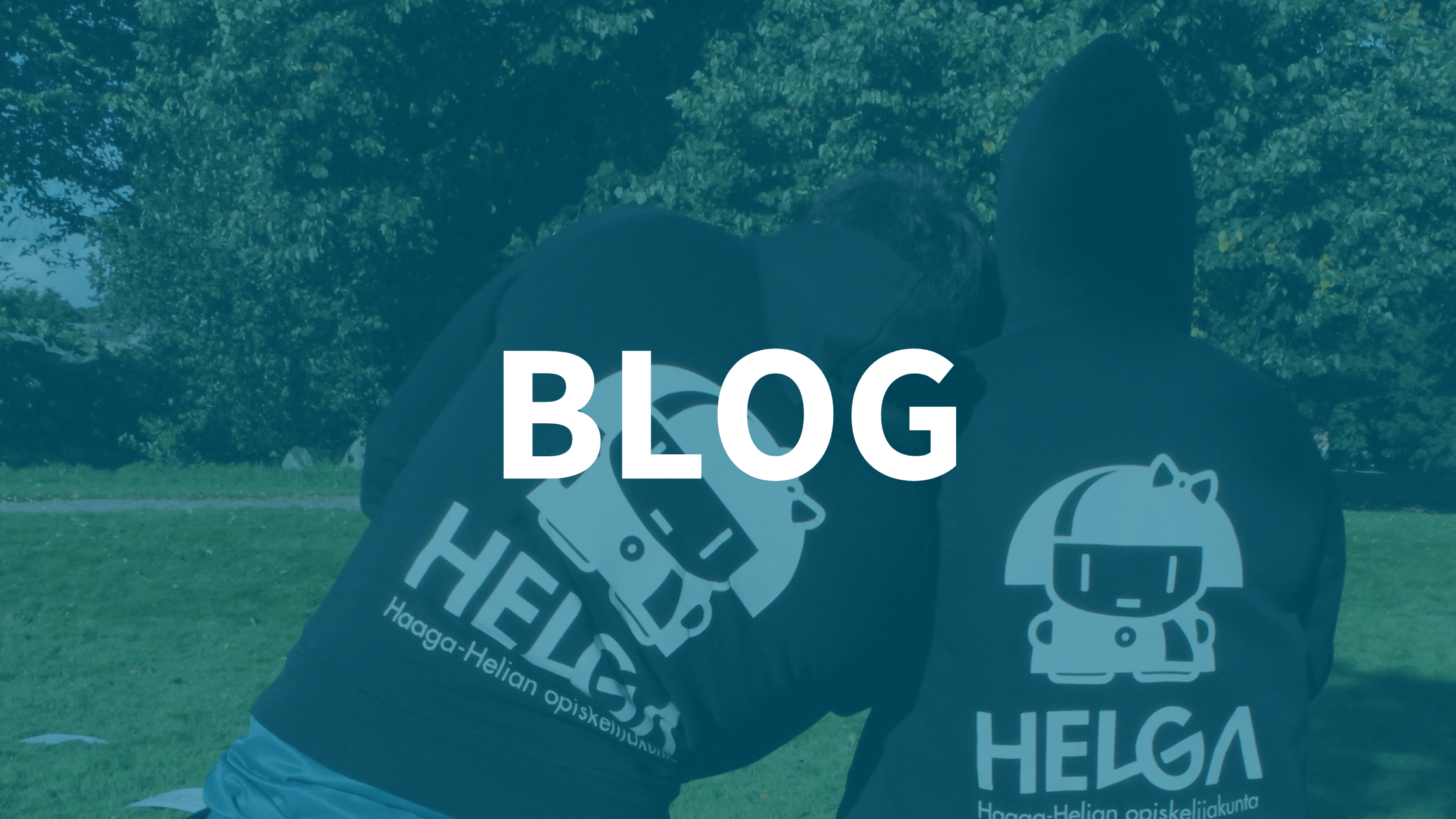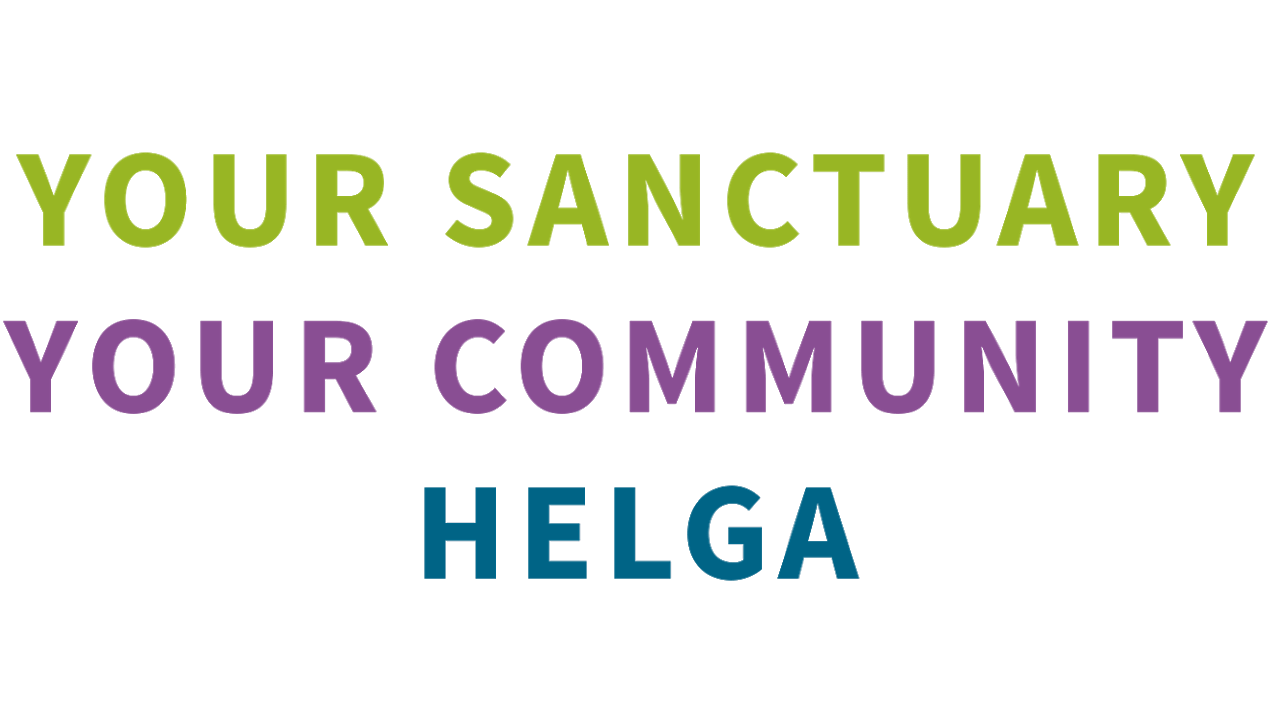Back in early 2020, right after my third term on the board of Helga had ended, I was looking for an internship to wrap up my studies. During the process I ran into an unfortunate realization that the experience and skills learned in student organizations is not very widely recognized among employers. This felt very frustrating, because this was the closest thing to work experience relevant to my field of studies I had, and my assumption was that it would help me stand out.
After multiple interviews where I tried to explain that the activities I did in Helga were an actual job rather than a bunch of fun extracurricular activities, I decided that I need to take action. To spread awareness of the benefits of student union activities, I wrote two blog posts: the first about explaining thoroughly what a student union actually does, and the second about the soft skills I learned in Helga that I think are universally applicable and beneficial for almost any field of work and type of role.
My efforts eventually paid off, and now is finally the time to conclude this “trilogy” by looking back at my first three years in working life post-graduation, and reflecting on how the experience Helga gave me has helped me in my career. I hope that this will help you, the students, to see the tangible benefit of dedicating time for a trustee position in your student union beyond just the fact that it looks good on the CV. I will try to focus on generally applicable things rather than something specific to my work as a recruitment consultant, but I won’t leave anything out due to it being specific to my work either.
Teamwork and communication
Let’s start from the most obvious one: teamwork. I reckon this will be the first thing that comes to your mind when you think about the takeaways from any kind of volunteer work. I can’t come up with many roles where you don’t somehow collaborate with others. Having the experience of not just working with others, but understanding different types of people, and having the ability to see their viewpoint on matters makes the collaboration drastically easier.
A good leeway from teamwork is communication with various internal and external stakeholders. Good communication is the cornerstone of any functioning team, and something no organization can thrive without. One of the most important lessons I learned in Helga is that too much communication is way better than too little. Especially in an environment where you are collaborating with others in various projects, keeping everyone up to date with what’s going on with your projects is crucial. This transfers directly into working life too. My time in Helga has also lowered the threshold to ask for help when I don’t know something – asking or not asking for help can make the difference between success and a whole project falling apart.
However, I feel that having experience with external communication has been far more impactful. Where the premise of communicating and collaborating with internal stakeholders, such as your colleagues and team mates, is that you share a common goal, with external stakeholders you are more likely to have to work your way there and influence their decisions. This often starts with establishing and earning their trust. Especially if we’re talking about client stakeholders, they will have their expectations for the outcomes of your collaboration, and can be quite demanding. Regular, clear and informative communication is key here, and the benefit of having communicated and collaborated with various stakeholders during my time in Helga prepared me to recognize my audience, which makes it easier to adjust the way of communicating accordingly. Finally, having taken part in many instances of negotiation, it has felt more natural for me to also constructively challenge the views of i.e. my clients, which is one of the most important traits for a consultant.
Digital tools
A very concrete skill that might get overlooked is the mastery of various digital collaboration tools that are more or less a critical feature of modern working life. Helga utilizes the Google Workspace as a cloud-based collaboration platform, Slack for internal communication and Trello for project management and documentation. While these tools took a while to get used to, they quickly became a natural part of my everyday work life – especially learning to effectively use the calendar to manage my time and work tasks is a skill I couldn’t manage without today. Going through the learning curve in Helga really paid off, as the same tools have been used in the companies I have worked for, and I have been able to jump right into action instead of having to learn to use them from scratch.
In addition to collaboration platforms there are many more miscellaneous digital tools I got the chance to learn to use that haven’t been directly used in my work, but are widely used in many other lines of work. These include for example Lime CRM, which was used as Helga’s member registry, Canva for producing visual materials, Visma Netvisor for financial management tasks such as invoicing, and the paid advertising features in social media channels such as Facebook and Instagram.
Ways of working
Helga follows a strategic action plan where its strategic goals are broken down into concrete, measurable actions on an annual level. This is very reminiscent of a framework for strategic goal-setting and transferring that into action called OKRs (Objectives and Key-results), which is used in many companies, including my first workplace after graduation. While this is a very specific example, I think the key takeaway – understanding strategic goal-setting and how that transfers into action – is applicable to almost any given situation, and it helps set and prioritize goals and measure how well you have reached said goals.
Another thing regarding ways of working was that Helga has loosely adapted some methodologies from so called agile software development, mainly Scrum and Kanban. Kanban is a project management tool for visualizing progress, and it was used to track the progress of different processes in Helga. I use kanban to this date as a way of tracking the progress of my own work, and it has also been used in the majority of the work projects I have taken a part in during my career.
Scrum is a project management framework, where a team’s work is carried forward in cycles, or “sprints”, and the activities for each sprint is determined and prioritized according to what actions have the biggest impact. The outcomes of each sprint are scrutinized in retrospectives, and the findings taken into consideration when planning the next sprint.
While all of the practices of Scrum weren’t followed very scripturally, our adaptation gave me tools for prioritizing work and taught me the importance of documentation and reflecting past progress to improve the success of future actions, and how breaking large projects down to smaller items makes them much easier to manage. And as a cherry on top, working in the IT industry, understanding the concept of Scrum has helped me better understand the daily work of software developers in the many companies that practice Scrum.
Taking ownership of my work
I think above all the most important thing my time in Helga has shaped me as a professional is the way I carry on my responsibilities. The importance of identifying the goals of my work and what action I need to take, and understanding the fundamentals of what happens if I don’t do them. Prioritizing in the moment and planning ahead for the long run. Realizing that it’s an equally important part of my responsibility to ask for help if I need it, and when leading a project, delegating tasks to others to even out the workload instead of trying to do more than I’m capable of by myself. Saying no to new tasks when my plate is full. Not fearing failure, but seeing opportunities to develop, as you don’t need all the skills and knowledge to try. And when I do fail – and we all will – owning the failure and learning from it. Being proactive. Challenging things when I don’t understand the “why” behind them, and providing constructive feedback when the situation calls for it. A good attitude.
These are all traits that I have digested during my time in the Helga board, even if it sometimes meant learning them the hard way. A student union is a safe environment to learn these things, but going through that schooling has given me the confidence to succeed in whatever challenges work life has put in my way.
I want to remind that these are just the skills and traits that have been helpful based on my experience. Depending on your career plans, you’ll probably learn other skills that are specifically beneficial to your field. And I most likely missed a thing or two.
What I do hope is that this text helps change your viewpoint from the benefit of student activism being “on paper” to realizing how it actually improves your skills and knowhow. With these words I encourage you to make the best decision of your student life and apply for the board of your student union or association. The future is created by being active today, and being active today may create your future.
Sami Ranta-aho
Helga-alumni


